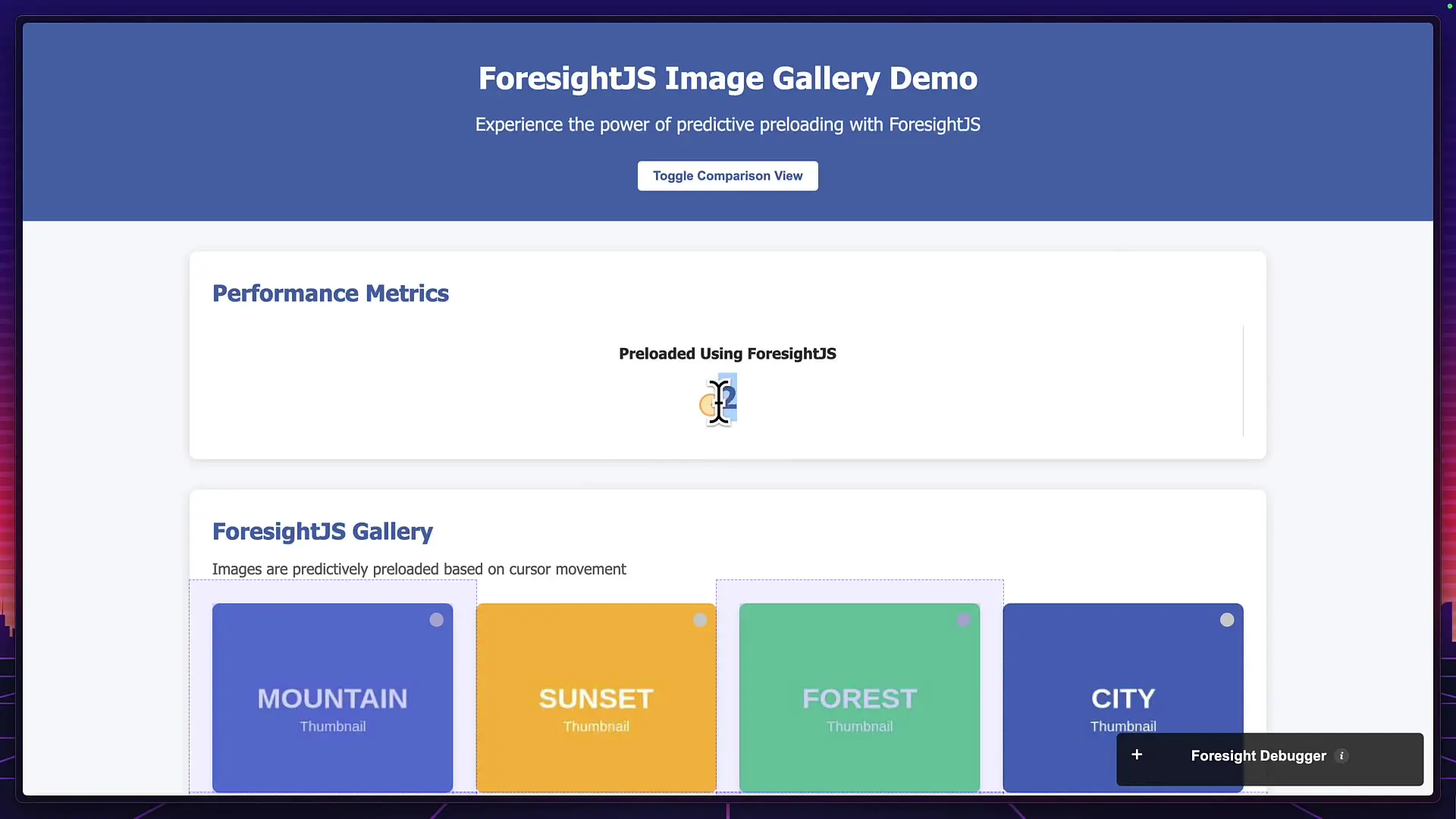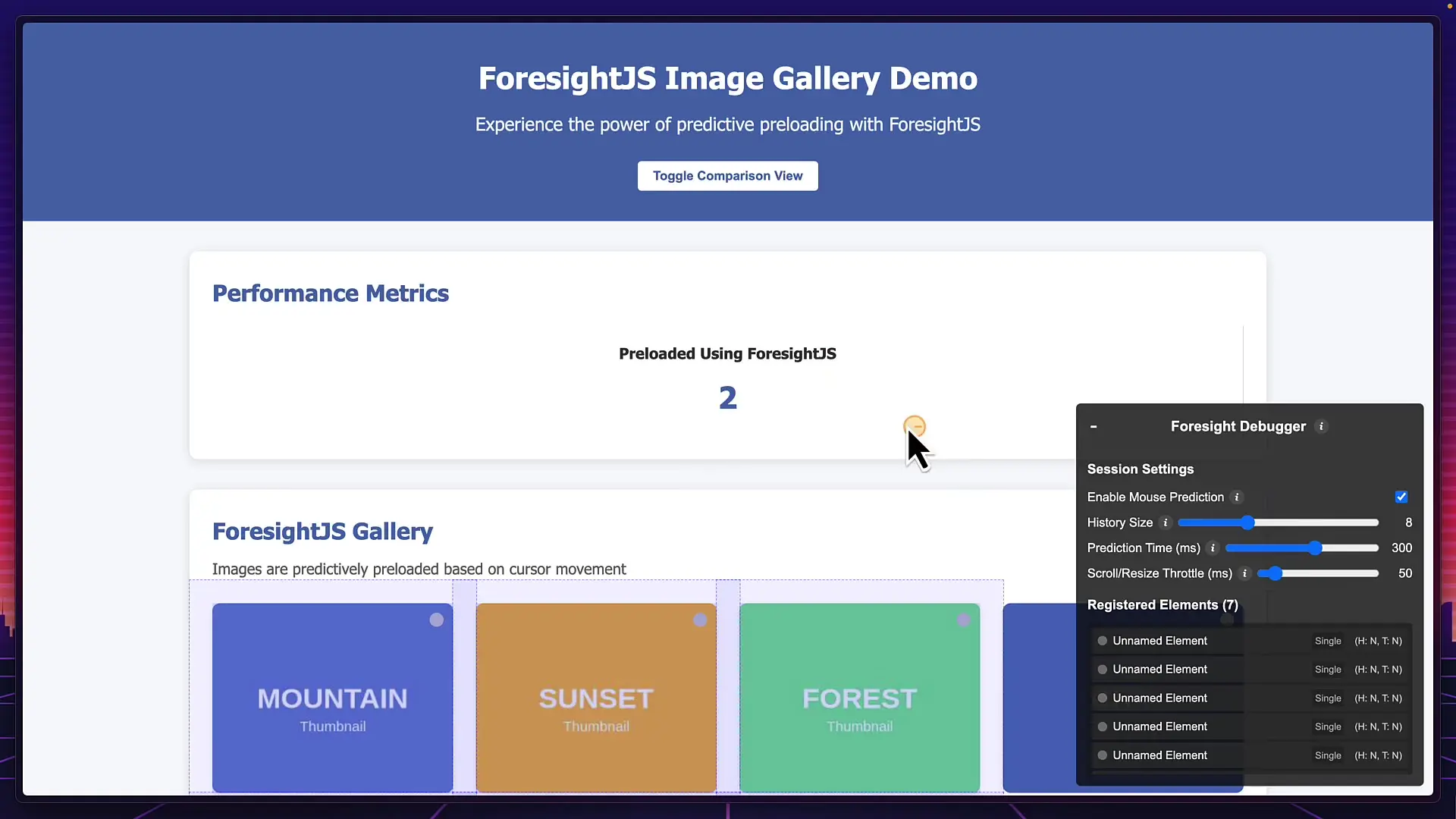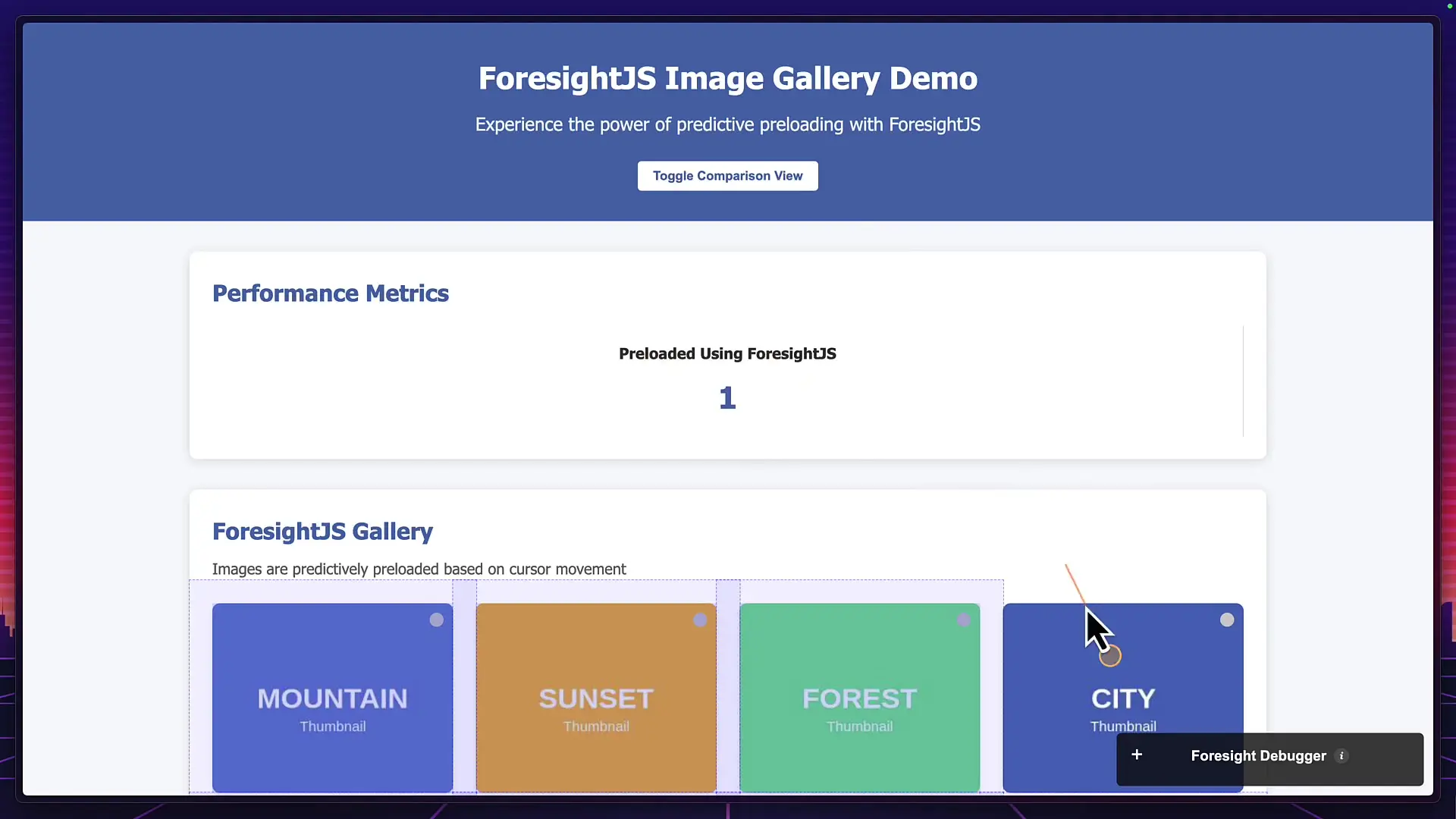
In the constant pursuit of faster web experiences, developers have tried numerous performance optimization techniques for web applications. We've implemented lazy loading, code splitting, and preloading on hover—but what if we could predict what users want to click before they even hover? That's exactly what ForesightJS accomplishes, offering a groundbreaking approach to web performance optimization.
What Makes ForesightJS Different?
Unlike traditional preloading methods that trigger when a user hovers over an element, ForesightJS uses sophisticated algorithms to predict user intent based on mouse movement patterns. This isn't simply preloading all links on a page (which would waste resources) or waiting for hover events (which still introduces delay). Instead, ForesightJS tracks mouse trajectory to make educated guesses about what elements a user is likely to interact with.
The most impressive part? This powerful functionality comes in a lightweight 5KB package that works with any JavaScript framework or vanilla JS implementation.

How ForesightJS Works: The Technical Breakdown
At its core, ForesightJS uses mouse trajectory prediction to determine which elements a user is likely to interact with. When the library detects that a user's mouse is moving toward a registered element, it triggers preloading before the user even hovers over the element—sometimes several hundred milliseconds before a click would happen.
The library includes several key features that make this possible:
- Trajectory prediction that calculates where the mouse is heading
- Hit slop areas that expand the effective area around elements
- Debug visualization tools that show predictions in real-time
- Framework-agnostic implementation that works anywhere
Setting Up ForesightJS
Implementation is straightforward, requiring minimal code to get started. Here's how to initialize ForesightJS with custom settings:
// Initialize ForesightJS with custom settings
Foresight.initialize({
defaultHitSlop: 40, // Size of expanded hitbox around elements (in pixels)
trajectoryPredictionTime: 150, // How far ahead to predict mouse movement (in ms)
debugger: true // Enable visual debugging tools
});Once initialized, you can register elements that should trigger preloading:
// Register an element for predictive preloading
const unregister = Foresight.register(
imageElement, // The DOM element to monitor
() => {
// Callback that runs when Foresight predicts interaction
preloadImage(largeImageUrl);
updateMetrics();
},
{ hitSlop: 60 } // Optional per-element hit slop override
);
// Later, when cleanup is needed
unregister(); // Remove the element from Foresight monitoring
Real-World Performance Comparison
To understand the real impact of ForesightJS, let's look at a practical comparison between traditional preloading techniques and ForesightJS's predictive approach. In a test gallery with throttled network conditions (simulating slow 4G), the difference becomes immediately apparent.
- Traditional hover-based preloading: Images only begin loading when the user hovers over thumbnails, resulting in noticeable pop-in effects when clicking.
- ForesightJS predictive preloading: Images start loading before the user even hovers, resulting in instant display when clicked with no visible loading delay.
For larger assets or slower connections, this difference becomes even more pronounced. While a 20KB image might load quickly even with traditional methods, imagine the impact on 4-8MB images or complex data fetches—the predictive approach could save hundreds of milliseconds or even seconds of perceived loading time.

Fine-Tuning ForesightJS Performance
The library offers several configuration options to optimize its behavior for your specific application needs:
- trajectoryPredictionTime: Adjust how far ahead (in milliseconds) the library predicts mouse movement. Higher values make earlier but potentially less accurate predictions.
- defaultHitSlop: Control the size of the expanded hitbox around elements. Larger values make it easier to trigger preloading but might cause false positives.
- Per-element hitSlop overrides: Fine-tune prediction sensitivity for individual elements based on their importance.
The built-in debugger provides visual feedback on these settings, showing the prediction circle and hit slop areas in real-time. This makes it easy to experiment with different configurations to find the optimal balance between early preloading and prediction accuracy.
Framework Integration
While ForesightJS works with any JavaScript codebase, it already offers documentation for specific framework integrations:
- Next.js integration for optimizing page transitions
- React Router integration for smoother navigation
- Support for other frameworks through its simple API
It's worth noting that some frameworks like Tanstack Router are developing their own predictive prefetching solutions, which might offer more integrated experiences in those specific ecosystems.
Limitations and Considerations
Before implementing ForesightJS, it's important to understand its limitations:
- Mobile/touch devices: ForesightJS relies on mouse movements, so it doesn't provide benefits on touch-only devices.
- Resource considerations: While preloading improves user experience, it can increase overall bandwidth usage if predictions are inaccurate.
- Integration complexity: Adding another library means more code to maintain and potential compatibility issues to manage.
Should You Implement ForesightJS?
ForesightJS represents an innovative approach to web application performance optimization techniques, but it shouldn't be your first optimization strategy. Consider implementing it after you've already addressed fundamental performance issues:
- Optimize asset sizes (images, JavaScript, CSS)
- Implement proper lazy loading for off-screen content
- Use code splitting and tree shaking
- Optimize server response times and implement caching
- Consider traditional preloading techniques
Once these foundational optimizations are in place, ForesightJS can provide that extra layer of perceived performance improvement that makes your application feel truly instant.
Conclusion
ForesightJS represents an exciting advancement in web performance optimization techniques. By predicting user intent through mouse movements, it creates experiences that feel magically fast, eliminating those last few hundred milliseconds of waiting that can make the difference between a good and great user experience.
While it shouldn't replace fundamental performance optimization practices, it's a powerful tool to consider for applications where every millisecond of perceived performance matters. As with any optimization technique, measure its impact in your specific context to determine if the benefits justify the implementation.
Let's Watch!
ForesightJS: Revolutionizing Web Performance with Predictive Preloading
Ready to enhance your neural network?
Access our quantum knowledge cores and upgrade your programming abilities.
Initialize Training Sequence